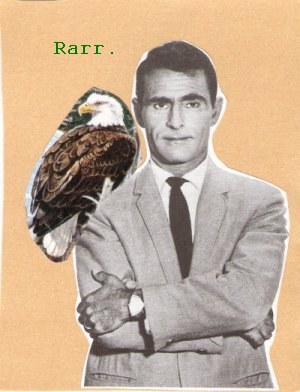I only came across a few theories about the existence of violence in society. One mode of thinking comes from James W. Prescott who theorizes that violent behavior stems from a lack of mother-child bonding (classic blame your parents for your problems). Additionally he thinks that sexual repression and punishment of children can also serve as causes for violence. On the other hand, Stephen Pinker believes that violent behavior is evolutionarily derived. While either of these attempt to explain where violence comes from, no one has much to say about why we are drawn to violence...human nature I suppose. Mock violence has been a regular part of society for some time in the form of sports and male bonding. Even the Eucharist has violent undertones.
When it comes to literature, you really cannot beat Southern Gothic for its gore factor. I happened across a master's thesis from a woman at the University of Tartu in Estonia (what?). She wrote her paper about Faulkner and McCarthy and provided a good summary of how "traditional Gothic" and "Southern Gothic" are linked. All gothic literature deals with the development and existence of evil. Gothic stories are different from other fictionals genres because we see a shift from sympathy with the "victim side" over to the "villain side." Characters and even protagonists at times are essentially "villain-heroes." Evil itself is seen less as some alien force created by the Devil, and instead is seen as an independent psychopathological force from the Freudian unconscious. This helps to explain why so much Southern literature deals with the "grotesque." Grotesque characters are often freaks, or people with physical deformities, or psychopaths, but they are characters that induce both empathy and disgust. So when we read these books, we are often confronted with feelings of discomfort and even humor due to the presence of the grotesque.
Poe is the direct link between traditional and Southern gothic. He writes much in the style of the traditional, but is from the Southern United States. What separates Southern Gothic from its predecessor is that these stories deal with issues specific to the South. The issues range from dealing with a racist heritage, loss and deprivation of history as a result of the defeat in the civil war, and religious fanaticism. Flannery O'Connor, William Faulkner, and Cormac McCarthy are all prominent authors. Faulkner makes the actions of his villains compelling and even offers compassion for them while withholding justification. O'Connor often tackles religious fanatics in her stories where misinterpretation of the Christian faith is often the first crime and some can read her stories as warnings for faith gone astray. I have read in multiple places how Flannery's intentions were partially to show how everyone is in need of grace, because really in even her most horrific characters we can find something to sympathize with them about. McCarthy is obviously enamored of both of these authors and follows in their tradition with a slight Southwestern twist. In the novel I just finished, you actually listen to characters philosophize about how times are changing for the worse, and society is becoming more violent.
I personally love Southern Gothic literature and bloody cult films, but I have no desire to shoot a gun and I don't like to see people fighting in real life...I think this is pretty common amongst a lot of people. Research on violence in the media and videogames often shows little justification for a correlation between violence watched and violence acted out. This seems pretty obvious considering what percentage of people are exposed to violent movies (just about everybody) compared to how many commit violent crimes. None of this explains why we enjoy watching it though...is it a form of escapism? and if so, how odd that we can on one hand "root for" the villain in a book or in Grand Theft Auto, but in real-life can be so cold towards those actual people accused of commiting violent crimes...

Flannery looking tough.

2 comments:
Two Things: Don't forget about Crews. Or at least his novel Feast of Snakes. Some really interesting interactions depicted within that novel. Black/White, Male/Female, Man/Beast, Man/Nature, Father/Son...etc...
Two: I re-read Faulkner's short story "Rose for Emily" the other day on the bus. At the end was a short interview with Faulkner about the story. In sum, he pretty much said he was just writing a story about something he had seen, heard and grown up around. The interviewer tried to suggest all this symbolism within the story and Faulkner was pretty weary of such interpretations. His intent seemed simply depict the south in all its realities.
I think this brings up an important element of American Southern Gothic literature that shouldn't be forgotten. Furthermore, I think that such a depiction does not necessarily mean that it remains stuck in realism. Rather, in displaying/exposing the south for all that it is and contains, it encompasses all the folklore, mystery and myth that comes with it. In the end, it adds an interesting facet to its characterization and the figures of each story.
It may be the 20th century, but t snakes have some sort of spiritual power, the devil exists within shadow and rumours of his mischief still linger.
Post a Comment